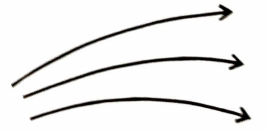A sphere of radius r has an electric charge uniformly distributed in its entire volume. At a distance d from the centre inside the sphere (d<r) the electric field intensity is directly proportional to:
1.
2.
3. d
4.
The electric field at a distance 2R from the centre of a uniformly charged non-conducting sphere of radius R is E. The electric field at a distance from the centre will be:
1. Zero
2. 2E
3. 4E
4. 16E
In a uniform electric field if a charge is fired in a direction different from the line of the electric field, then the trajectory of the charge will be a:
1. straight line
2. circle
3. parabola
4. ellipse
A positively charged pendulum is oscillating in a uniform electric field pointing upwards. Its time period as compared to that when it oscillates without electric field:
1. is less.
2. is more.
3. remains unchanged.
4. starts fluctuating.
How many electrons should be removed from a coin of mass 1.6 g so that it may float in an electric field of intensity N/C directed upwards?
1.
2.
3.
4.
ABC is an equilateral triangle. Charges +q are placed at each corner. The electric field intensity at the centroid of the triangle will be:
1.
2.
3.
4. Zero
A charge Q is placed at the centre of a square. If the electric field intensity due to the charges at the corners of the square is E1 and the intensity at the midpoint of the side of the square is E2, then the ratio will be:
1.
2.
3.
4.
Point charges, each of magnitude Q, are placed at the three corners of a square as shown in the diagram. What is the direction of the resultant electric field at point A?
1. OC
2. OE
3. OD
4. OB
Two charges e and 3e are placed at a distance r. The distance of the point where the electric field intensity will be zero is:
1. from 3e charge.
2. from e charge.
3. from 3e charge.
4. from e charge.
If the electric lines of force in a region are represented as shown in the figure, then one can conclude that the electric field is:

1. Non-uniform
2. Uniform
3. Both uniform and non-uniform
4. Zero everywhere








